The Intel 6th Gen Skylake Review: Core i7-6700K and i5-6600K Tested
by Ian Cutress on August 5, 2015 8:00 AM EST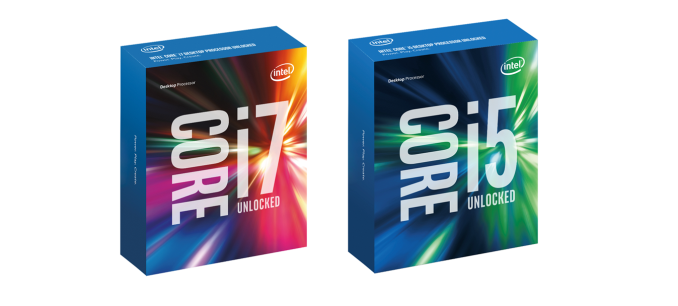
It’s the Intel review you’ve been waiting for. Today is the launch of the first two CPUs from Intel’s Skylake architecture, the 6th Generation Core i7-6700K and the Core i5-6600K. With the new processors we get a new architecture, a new socket, the move to DDR4 and the potential to increase both performance and efficiency at the same time. A lot of readers have asked the question – is it time to upgrade? We had a CPU or two in to test to answer that question.
Launch Day for Skylake-K: August 5th
For those in the industry, predicting Skylake’s launch has been a minefield. Even at Computex in June, some companies were discussing a large six-week window in which they expected Skylake but were waiting on official dates. But as we've seen with a number of previous Intel mainstream launches, Intel likes to aim at the gaming crowds release at a gaming events. It just so happens that today is Gamescom in Germany, two weeks before what everyone expected would be a launch at Intel’s Developer Forum in mid-August.
Today is a full launch for the Skylake-K processors, with the two CPUs being launched alongside new Z170 series motherboards and dual channel DDR4 memory kits. Having spoken to a few retailers, they have stock ready to go today. That being said, a number of them would have liked more stock on launch day, suggesting that they expect the processors to sell out rather quickly when the buy buttons are activated.
All the motherboard manufacturers should be ready to go as well – take a look at our breakdown of the retail motherboard information we could get before launch for a good overview of what to expect this generation. DDR4 manufacturers have been selling the new standard of memory for over a year due to Intel’s high-end X99 platform supporting it, but today will see the introduction of dual channel kits to go with the Skylake platform as well as a number of higher speed modules ready and waiting.
‘Where are the non-K processors?!’ you may ask. Intel tells us that these will be released later in the year, sometime in Q3. As a result, we have to wait and see what range of models come out at that point and we will get a number in to review.
Retail Packaging
To go with the launch is a new look of Intel's Core processor packaging, in part to appeal to the gaming crowd. As the gaming industry is considered one of the few remaining areas for potentially large growth in the PC industry, Intel is increasing its focus on gaming as a result.
Aside from changing the graphics on the box, it has been reported – and seemingly confirmed by the thinner boxes in the official pictures from Intel – that these processors will not be shipped with a stock Intel cooler. Users will have to purchase third party coolers. Part of this makes sense – overclocking processors need beefier cooling in order to extract the maximum overclock and buying something above the stock cooler should be good. The downside of not having a stock cooler means an added cost to the end user. However as the hole mounting for the new socket, LGA1151, is similar to that of LGA1150/1155/1156 – spacing is still 75mm – many existing CPU coolers for the current LGA115x sockets should be compatible, making it possible to reuse many coolers for no more than the cost of a new thermal paste application.
For users looking for a new air or liquid cooler, head on over to our recent roundup of Top Tier CPU Air Coolers Q3 2015: 9-Way Roundup Review and the Closed Loop AIO Liquid Coolers: 14-way Mega Roundup Review published last year.
The Skylake CPUs: Intel’s 6th Generation Core
Intel’s tick-tock strategy has been the bedrock of their application to bring new processors to the market, growing in terms of user experience for either power, efficiency, or both. It has been noted that certain generations either have an enterprise focus or a mobile-first focus, which always seems to tip the scales in one direction of the other. However, with the recent announcement of a third CPU line at 14nm called Kaby Lake for 2016, tick-tock just became tick-tock-tock.
| Intel's Tick-Tock Cadence | |||||
| Microarchitecture | Process Node | Tick or Tock | Release Year | ||
| Conroe/Merom | 65nm | Tock | 2006 | ||
| Penryn | 45nm | Tick | 2007 | ||
| Nehalem | 45nm | Tock | 2008 | ||
| Westmere | 32nm | Tick | 2010 | ||
| Sandy Bridge | 32nm | Tock | 2011 | ||
| Ivy Bridge | 22nm | Tick | 2012 | ||
| Haswell | 22nm | Tock | 2013 | ||
| Broadwell | 14nm | Tick | 2014 | ||
| Skylake | 14nm | Tock | 2015 | ||
| Kaby Lake (link)? | 14nm | Tock | 2016 ? | ||
Intel’s early issues with 14nm yields have been well documented and we won’t go into them here, but 14nm is a more expensive process with an increased number of lithography steps as we reach the limits of current semiconductor technology. FinFET was introduced back in 22nm, but to move down to 10nm makes either the current process more expensive or other methods have to be used. As a result, we see Moore’s Law stretching out from an 18-24 month cadence to a 24-30 month cadence for the first time in fifty years. As we’ve seen with the graphics card market recently stalling at 28nm, there is a need (or at least opportunity) to develop more power efficient architectures rather than just relying on die shrinks to do it for you.
Future development aside, today Skylake will hit the shelves in the form of two overclockable processors, the Core i7-6700K and the Core i5-6600K.
| Intel i7 Lineup | |||
| i7-4770K | i7-5775C | i7-6700K | |
| Price | $339 | $366 | $350 |
| Cores | 4 | 4 | 4 |
| Threads | 8 | 8 | 8 |
| Base CPU Freq. | 3.5 GHz | 3.3 GHz | 4.0 GHz |
| Turbo CPU Freq. | 3.9 GHz | 3.7 GHz | 4.2 GHz |
| Graphics | HD 4600 (GT2) | Iris Pro 6200 (GT3e) | HD 530 (GT2) |
| EUs | 20 | 48 | 24 |
| iGPU Freq. | 1250MHz | 1100MHz | 1150MHz |
| TDP | 84W | 65W | 91W |
| DDR3/L Freq. | 1600MHz | 1600MHz | 1600MHz |
| DDR4 Freq. | - | - | 2133MHz |
| L3 Cache | 8MB | 6MB | 8MB |
| L4 Cache | None | 128MB (Crystal Well) | None |
| Interface | LGA1150 | LGA1150 | LGA1151 |
As with previous nomenclature, the i7 model will be quad core CPU with HyperThreading and 8MB of L3 cache. This matches up with the Haswell parts to which Skylake is more closely aligned (Desktop Broadwell is rather a blip, using an external on-package eDRAM and you can read our review here), in a large number of aspects including the other cache levels. The 6700K runs at a base frequency of 4.0 GHz and an all-core frequency of 4.2 GHz. This is a slight speed bump over the 4770K which was launched at the start of Haswell, but a minor reduction in clockspeeds compared to the i7-4790K, which was an upgraded Haswell part launched later under the name of ‘Devil’s Canyon’.
The integrated graphics nomenclature has changed, with the new i7-6700K having the Intel HD 530 graphics, compared to the HD4600 in the Haswell parts. We know that the HD 530, like the HD 4600, has 24 of Intel’s execution units in the iGPU, and they run at a peak frequency of 1150 MHz. The introduction of the HD 530 marks the launch of Intel’s 9th generation graphics, and we'll cover Gen9 in a bit more detail later.
| Intel i5 Lineup | |||
| i5-4670K | i5-5675C | i5-6600K | |
| Price | $242 | $276 | $243 |
| Cores | 4 | 4 | 4 |
| Threads | 4 | 4 | 4 |
| Base CPU Freq. | 3.4 GHz | 3.1 GHz | 3.5 GHz |
| Turbo CPU Freq. | 3.8 GHz | 3.6 GHz | 3.9 GHz |
| Graphics | HD 4600 (GT2) | Iris Pro 6200 (GT3e) | HD 530 (GT2) |
| EUs | 20 | 48 | 24 |
| iGPU Freq. | 1200MHz | 1100MHz | 1150MHz ? |
| TDP | 84W | 65W | 91W |
| DDR3/L Freq. | 1600MHz | 1600MHz | 1600MHz |
| DDR4 Freq. | - | - | 2133MHz |
| L3 Cache | 6MB | 4MB | 6MB |
| L4 Cache | None | 128MB (Crystal Well) | None |
| Interface | LGA1150 | LGA1150 | LGA1151 |
The i5 model for Skylake also has quad cores, but without HyperThreading and only 6MB of L3 cache. Like the i7, it also has the Intel HD 530 graphics but operates at a lower frequency band.
Both the Skylake processors will support DDR4 and DDR3L memory in order to ease the transition to DDR4 for the mainstream segment, although it should be said that DDR3L is implemented here due to its lower than standard DDR3 operating voltage of 1.35 volts. This more closely aligns with DDR4’s standard voltage of 1.20 volts or the high end DDR4 kits at 1.35 volts, and as a result we are told that motherboards that support DDR3L will typically only be qualified to run DDR3L kits, rather than DDR3 kits.
This leads onto the point that both of the K processors for Skylake sit at 91W, which is a small increase over Haswell at 84W and Devil’s Canyon at 88W. In the past Intel has historically run a 1:1 policy whereby a 1% performance gain must come at a maximum of a 1% power penalty – this was adjust to 2:1 for Broadwell, and we should assume that Skylake had similar requirements during the planning stage. Depending on the specific architecture details, one potential source for this increase in power consumption may be the dual memory controller design, although Skylake has a significant number of features to differentiate itself from Haswell.


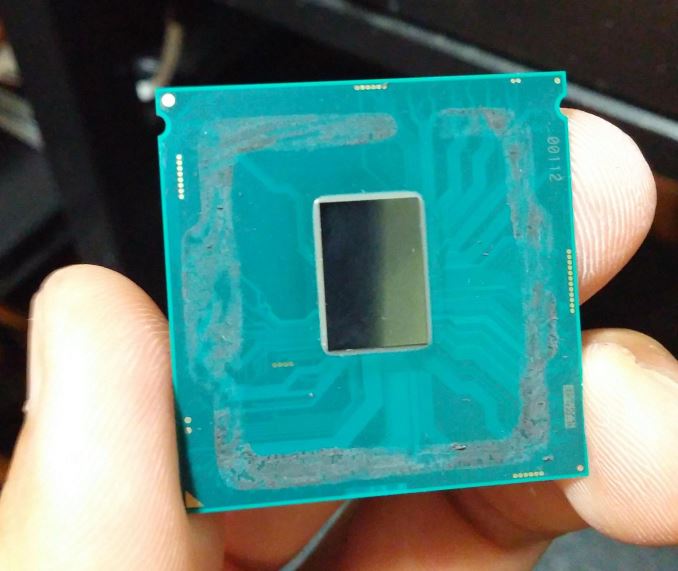
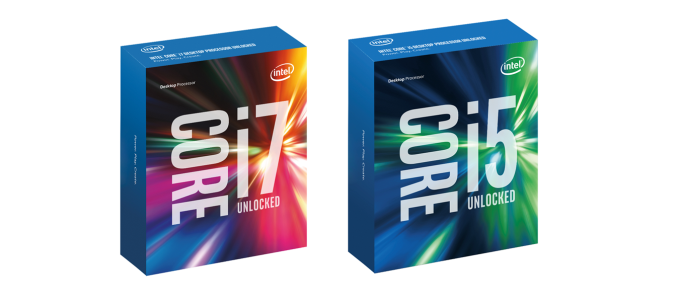
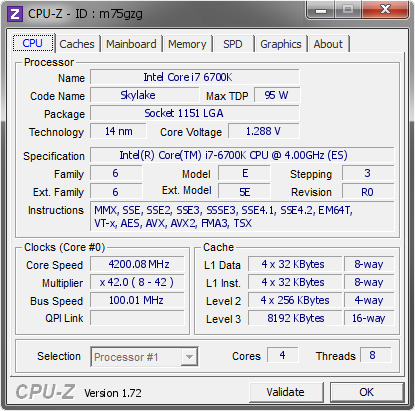
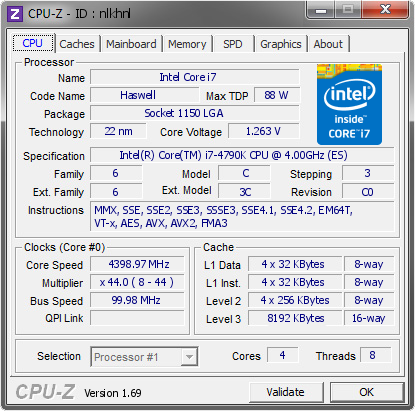
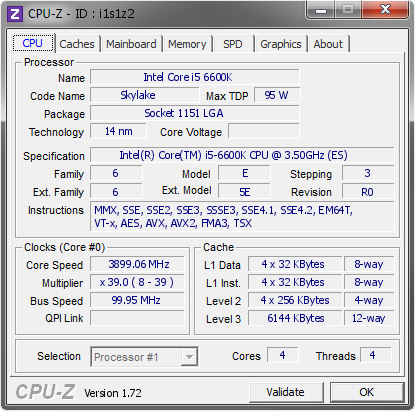
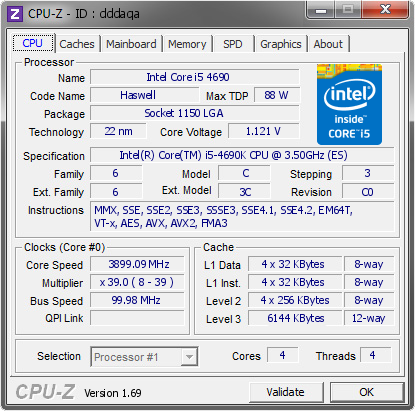








477 Comments
View All Comments
asmian - Sunday, August 9, 2015 - link
>Somehow I doubt it...Sorry, no edit - I meant of course the reverse, that 2 extra cores is DEFINITELY better than marginal extra IPC at a slightly higher overclock, despite the slightly higher TDP. Quad-core Skylake at this price AND requiring DDR4 makes Haswell-E look very good indeed.
Ethos Evoss - Sunday, August 9, 2015 - link
Why they STILL calling it i7 an i5 i3 ... they supposed to change it this time differently ..like i4 i6 i8 ?? or rather without that apples ''i'' ?
orion23 - Sunday, August 9, 2015 - link
Yay for my 2600K @ 4.8ghz from day 1Never had as much fun overclocking and building system
By now, I've changed cases (3x) and PSU's (2X), VGA's (2X). But not my loyal 2600K :)
What a workhorse it is
Kutark - Sunday, August 9, 2015 - link
I think a lot of people in the comments aren't really understanding the article. They state that the best reason to upgrade isn't really the processor speed, its all the other things the new platform affords you.In particular im very happy that i will FINALLY be able to get an SSD with speeds faster than what SATA3 allows as many of the motherboard for the z170 have m.2 thats not running on sata but on PCIE channels. It also allows for some real bandwidth in SLI situations. I have a single 980ti, and this platform would allow me to SLI another down the road and not impede things.
Granted, its not a good value proposition when you look at the end result, but its a very nice future proofing platform in my opinion.
Its kind of like saying if you have a modded older mustang thats as quick as a new mustang that you shouldn't upgrade because its just as or maybe slightly faster. There are more factors to the equation. Things that add to the quality of life, etc.
In skylake's its mostly stuff related to the chipset. IMO thas fine by me.
sonny73n - Wednesday, August 12, 2015 - link
I think you're an idiot. Understanding the article is one thing, realizing how close it is to the truth is another. Sure it's a nice upgrade for anything prior to Sandy Bridge but the author has summed up this article with a bold statement "Sandy Bridge, Your Time Is Up" which I believe - a false statement. Should I have a 5th grader break down the calculation of upgrade options so you can understand? First, note to mind that there's no such thing as future proofing in PC hardwares like you said and K series are made for overclocking.Let break down the upgrade options for my rig - Z68 MB $190, 2500K $230, HSF $60, 8GB RAM $60, PSU $180, GTX 780 $480, SSD $180, Case $80. Total $1460.
Option 1: Upgrade MB, CPU, HSF and RAM. Old components ($540 new) can eBay for ~$200. New components $560 - $200 = $360 (out of pocket). Performance gain: System Overall 30%, Gaming 3 to 5%.
Option 2: Upgrade the whole system. Total $1480. Performance gain same as option 1. Now having 2 systems (wonder what I'm gonna do with both).
Option 3: Upgrade for gaming. Another GTX 780. Performance gain: BF3 1920x1200 4xAA about 95%. Total $480.
Sure Skylake has some new features. Do I need them? NO. Do my SSD saturate SATA3 bus (throughput around 550MB/s)? NO. Is there any program (beside Handbrake which I use rarely) that can utilize the full power of my 2500K OCed mildly at 4.2GHz? NO. Can 980ti SLI saturate PCI-e2.0? NO. Am I such an idiot that I have a good running Mustang but I still like to buy another just because it's a bit better? NO. Is being financially irresponsible add to the quality of life? NO.
Anyone with a brain that has a SB system or newer would never pick the first 2 options.
mapesdhs - Wednesday, August 12, 2015 - link
If there was a thumbs-up button for your post, I'd be clicking it. :Dsonny73n - Thursday, August 13, 2015 - link
Thanks :-) I wish I could explain it better. He's probably wondering why there's a $20 different lol. Hint CPUKutark - Thursday, August 20, 2015 - link
This is pretty hilarious and just further proves my point. You had a fundamental misunderstanding of what the article is stating. You also have a fundamental understanding of the concept of an opinion. This article is not a encyclopedia brittanica article trying to create statements of fact. It is the OPINION of this website that sandy bridge's time is up. I tend to agree with them. And i'm on sandy bridge.Like most internet heroes, you're focusing on one aspect, price/performance. People buy products for a multitude of other reasons. Just simply getting a pure speed upgrade isn't always the primary factor behind the decision.
For example, i bought a VW GTI a few years back instead of a Mazdaspeed 3, even though the mazdaspeed 3 was a better performing car, and was cheaper. I bought the VW because of the intangibles. I liked the way it drove, i liked the interior design better, the exterior design better, etc etc etc.
I will be buying a skylake platform because i like the options the chipset affords me moving forward, in particular the increased number of PCI express lanes which will come in useful when m.2 pcie SSD's come down in price.
And please don't talk to me about financial responsibility. We're not talking about buying a $500k house when you can really only afford a $300k house. Most of us make enough money that while $1k isn't insignificant, it's not going to break the bank either. Get your head out of your ass.
But, please, continue on making an ass of yourself, if nothing it is entertaining...
FullCircle - Monday, August 10, 2015 - link
I'm still happy with my SandyBridge i7-2600k.I see no reason to upgrade for 25% performance boost...
I just upgraded my graphics card from GTX 580 to GTX 970, giving me a performance boost of 250%... now that's a worthwhile upgrade...
25% on the other hand? That's not worth it. CPU advancement has slowed so much there's not much reason to upgrade at the moment unless you have an incredibly old processor. Even the Core i7 processor I have in my old PC is still pretty good.
mapesdhs - Wednesday, August 12, 2015 - link
I upgraded from 3GB 580 SLI to one 980 and even that was a good speed increase. Rocking along with a 5GHz 2700K. For a 2nd system to drive a 48" TV, I considered HW, but in the end for the games I'll be playing (which can use more than 4 cores) a used SB-E build made a lot more sense. ASUS R4E only 113 UKP, 3930K only 185 UKP, etc. Only key item I bought new was another 980.It's pretty obvious with hindsight that Intel jumped ahead much more than they needed to with SB/SB-E, so we won't see another leap of that kind again unless AMD or some other corp can seriously compete once more, just as AMD managed to do with Athlon64 back in the day. All this stuff about bad paste under the heat spreaders of IB, HW and still with SL proves Intel is dragging its feet, ditto how lame the 5960X compares to XEONs wrt its low clock, TDP, etc. They could make better, but they don't need to. Likewise the meddling with the PCIe lanes for HW-E; it's crazy that a 4820K could actually be better than a 5820K in some cases. Should have been the other way round: 5820K should have been the 6-core low end with 40 lanes, next chip up at current 5930K pricing should have been an 8-core with 40 lanes, 5960X should have been an 8 or 10 core with 64 or 80 lanes (whatever), with a good 3.5 base clock, priced *above* the current 5960X a tad - that would have been a chip the real enthusiasts with money to burn would have bought, not the clock-crippled 5960X we have atm.